Background
ZoomInfo InboxAI‘s pro edition supports accounts and opportunities dashboards and playbooks. They address two roles:
- Sales reps and customer success managers – the individuals that are owning opportunities and accounts
- Sales and Customer success leaders that need to get overall visibility and insights that help them drive their teams.
The dashboards are powered by two main data sources: (1) Salesforce data (2) Email and meetings exchange. It can also connect to other data sources like product usage data to improve the overall data quality.
Account and opportunity health score and detailed guidance and insights (call-to-action) shown in the dashboards are powered by a set of playbooks. Each playbook includes a set of metrics that are expected to help your team win more deals and retain more accounts.
Accounts or opportunities need to be classified by a common desired behavior, which will be represented by the selected playbook. Simple examples are based on opportunity amount range, but more advanced ones could be time or stage dependent.
Setup
This section addresses the steps required to setup the dashboards and playbooks. There are three parameters that are required to set up ZoomInfo InboxAI pro and the corresponding playbooks. This process will usually be done together with ZoomInfo InboxAI‘s on-boarding team.
-
Scope of accounts that will be managed by ZoomInfo InboxAI
Identify the sub-set of accounts that will be management by ZoomInfo InboxAI. Examples:
- For Sales scenarios – All accounts with Open opportunity type = “New business” and future close date
- For Customer Success scenarios – All accounts with Account type = “Customer” and open renewal opportunities
2. Owner
Identify the person that owns each account.
- For Sales scenarios – Either the Salesforce Account Owner or the Salesforce Opportunity owner.
- For Customer Success scenarios – Typically the account owner is the sales person and most people add a custom field that identifies the Customer Success Manager. ZoomInfo InboxAI would need the name of this custom field at the account level.
3. Playbook identification
Identify the type of playbook the best fit each opportunity or account
- For Sales scenarios – There could be multiple options and combinations. (1) Account tier e.g. SMB, Mid-market, Enterprise (2) Opportunity amount range e.g. 0 – $10,000, $10,000 – $50,000, … (3) Stage – you may want to have different behavior in each stage (4) Close date – there could be more documents exchanged and/or more executives engaged toward the end of an opportunity.
- For Customer Success scenarios – Also in this case there could be multiple options. Here are few examples: (1) Account tier e.g. SMB, Mid-market, Enterprise – default (2) Renewal amount range (3) Stage e.g. on-boarding, on-going, pre-renewal. The stage could be a field in Salesforce or dynamically calculated based on dates e.g. start date for on-boarding, renewal date for pre-renewal.
Implementation approach
To provide you with flexibility to define and change your settings, ZoomInfo InboxAI is using three standard Salesforce formula custom fields at the account level. The field names are:
- InboxAI Pro – Managed – Salesforce API name: KomikoForSalesSupervised__c – CHECKBOX
- InboxAI Pro – Owner – Salesforce API name: KomikoForSalesOwnerEmail__c – TEXT – UNBOUNDED
- InboxAI Pro – Playbooks – Salesforce API name: KomikoForSalesPlaybook__c – TEXT – UNBOUNDED
In most cases the initial formula can be set up using Salesforce standard formula capabilities. In some cases it is required to bring some fields from objects that are not accessible by the standard Salesforce formula from the account object. In such cases it is recommended to use Roll up helper or similar tools that support this functionality.
The use of Roll up helper or similar tools
Roll up helper allows you to roll up content for related objects. It is using standard Salesforce technologies e.g. APEX classes and APEX Triggers to roll up info either instantly or in batch. The service is free for the first three fields.
Here is an example of rolling up the maximum end date field from the Salesforce Contracts object.
- Navigate to the Rollup Helper app and create a new rollup
2. Select the accounts object
3. Create a new field
4. Select source field
5. Save and Run
6. Let it calculate the value for the first time
7. Change it so it’ll update the field instantly
You are done.
8. The newly created field may not be accessible for the relevant profiles. So you may need to enable Salesforce access.

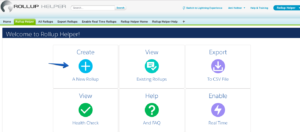

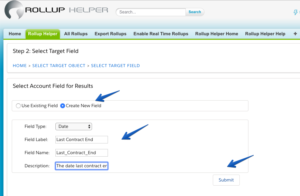
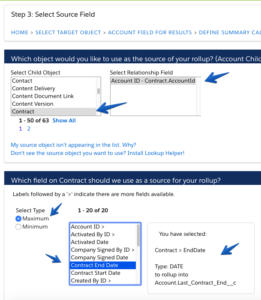



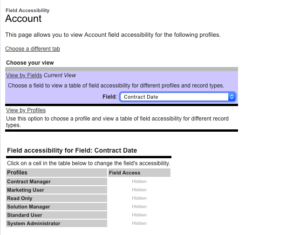
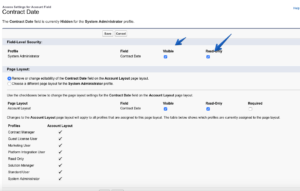
Leave A Comment?